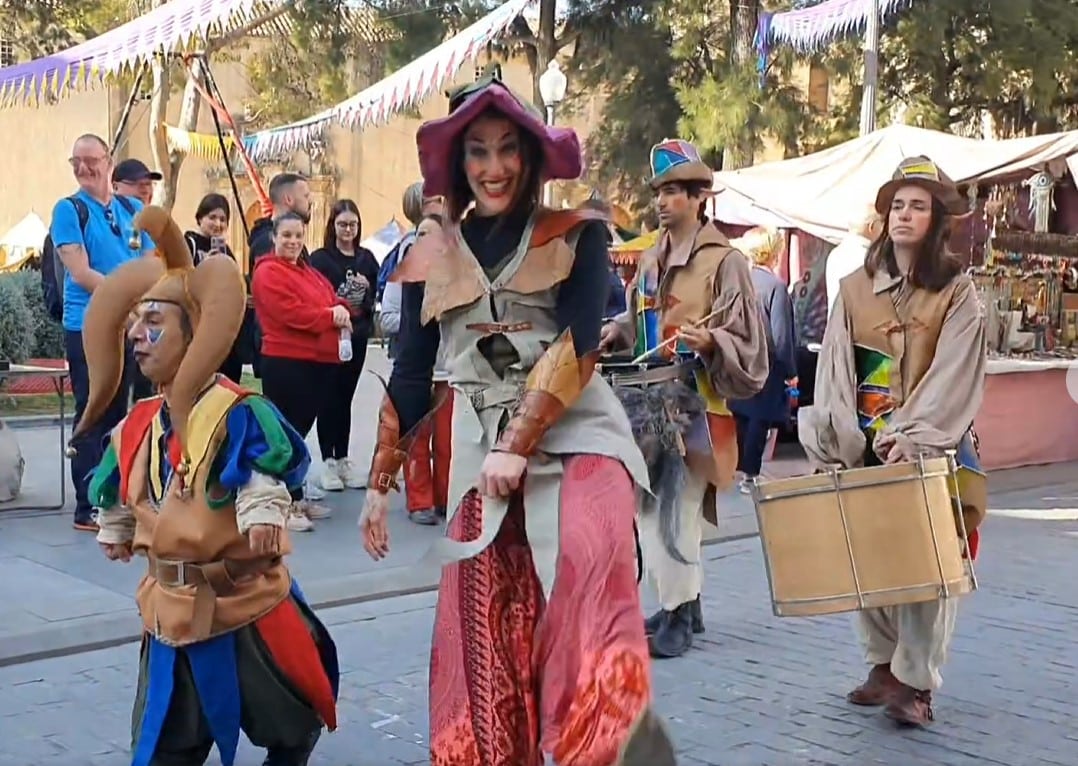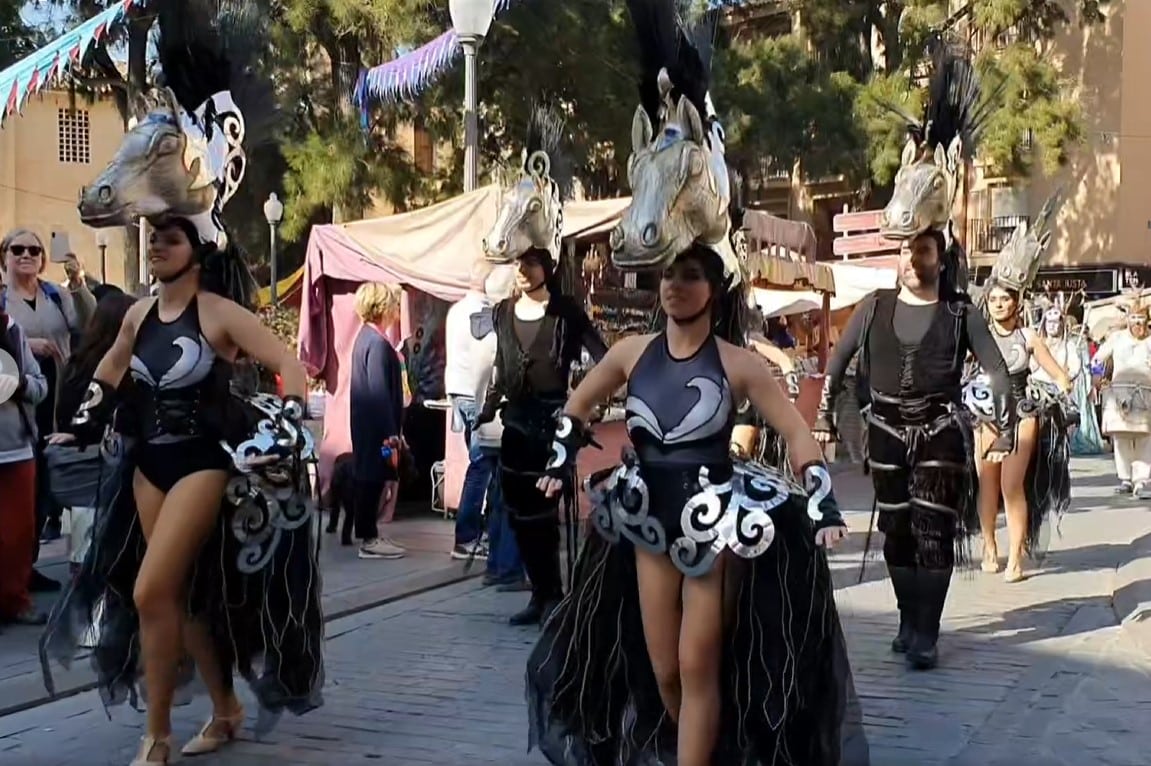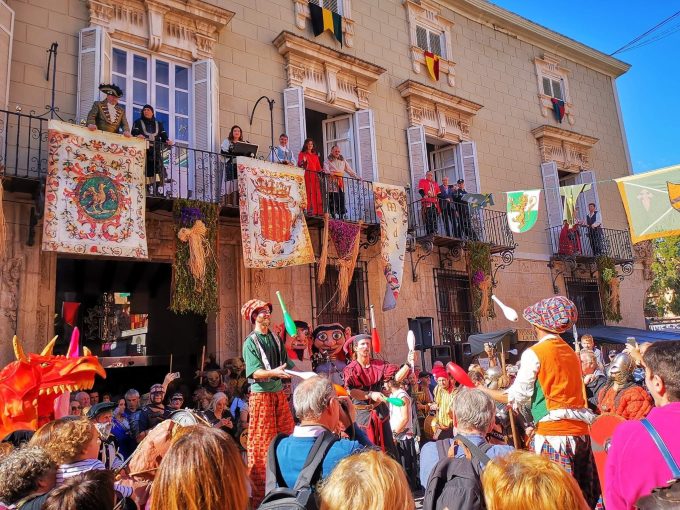A historical air and atmosphere flooded the streets of Orihuela City over the weekend as the traditional Medieval Market opened on Friday with the customary inauguration parade, followed by three days in which visitors were able to experience the most glorious times of the city, and the cultural melting pot, that was brought together within its walls.
The official opening ceremony of this powerful festival, one of the largest leisure activities held in the province, began on the stroke of noon at the Olma Gate, the only one left standing in the Moorish enclosure, dating back to the middle of the 16th century, when the Bishopric of Orihuela was first created.
Resplendent in their period costumes, the mayor, Pepe Vegara, the Festivities Councillor, Rocío Ortuño, together with a large representation of the municipal council gathered, along with the president of the festival, Manolo Ortuño, the Armengola, Ester Hernández, and the Moorish and Christian ambassadors, José Francisco Rocamora and Francisco Ruiz.
The mayor spoke of “this great event that is approaching its 25th anniversary and that is now a national benchmark, which is why we must continue to support it and its promotion so that it continues to grow every year.”
The councillor of festivities said that it was, “an atmosphere worthy of any novel of deeds and chivalry, three days, during which we are going to enjoy a unique experience, many surprises and a special atmosphere that will take us into the past of an Orihuela that was a key in Spanish history.”
This XXIV edition had nearly 300 stalls spread across three areas which were open to the public throughout the weekend, along with an extensive program of activities for children and adults amid the drumbeats and dulzaina.

It proved to be a spectacular weekend, far from the recent memories of rain and wind that have accompanied the event in recent years, for a change in glorious sunshine, allowing visitors to enjoy a decorated city that had been returned to the Middle Ages.
More than 300 craft and food stalls, included workshops of bygone crafts, music, theatre and animation companies as well as historical recreation, all connecting the city with the roots of its three cultures that coexisted during the medieval period: Christian, Jewish and Muslim, bound together in a wide route throughout the historic centre.
The market was divided into three different areas, the first of which had a dragon village. There was also a stop for donkeys, another for camels and a farm with different animals, in addition to many children’s games and crafts.

The second area was where the large-format shows took place, along with the artisans and a further ten tables with puzzle games and children’s attractions. There were also regular exhibitions and medieval tournaments.
The third area was the Arab market area, with shows, music and dance, with the Great Knights Tournament in the Rincón Hernandiano.
There was also no shortage of Theatre and musical performances, entertainment activities in the streets, dances and craft workshops (pottery, blacksmithing, weapons, stonework, glass, wood, basketry, silk, weaving, wicker, goldsmithing, shoemaking, leather embossing), as well as an exhibition of falconry.
Attended by many tens of thousands of people, many travelling from the coast and elsewhere, it truly was a wonderful event, which, unlike many other council contracts that we have written of in recent months, it gave spectacular value for the 99,000 euros that it is said to have cost.






